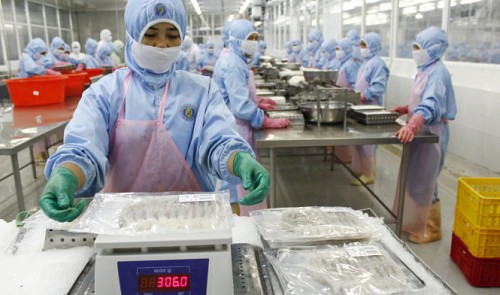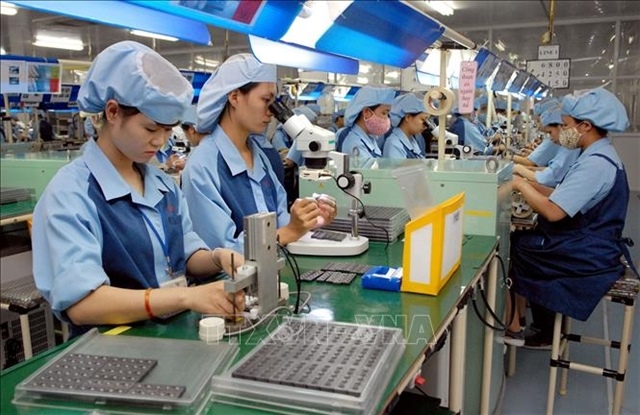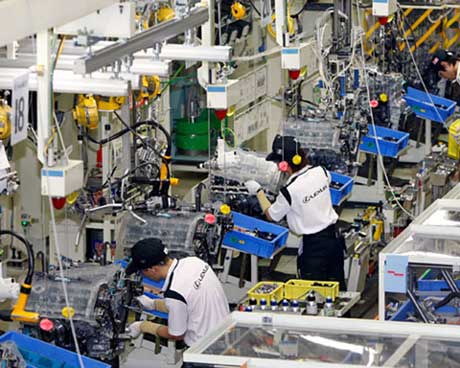Uncompetitive Vietnamese seafood sector to miss $8bn export target
Uncompetitive Vietnamese seafood sector to miss $8bn export target
High production costs, inadequate quality and unhealthy competition are keeping the Vietnamese seafood sector far away from the export revenue target of US$8 billion, an industry association has said.

Vietnam’s seafood sector is forecast to rake in $6.6 billion from exports in 2015, far behind the $8 billion target it set in the beginning of the year, according to the Vietnam Association of Seafood Exporters and Producers (VASEP).
The estimated 2015 export turnover is also $1.2 billion lower than the 2014 figure, the VASEP said, adding catfish growers are experiencing the most hardship.
While catfish is one of the export staples of the Vietnamese seafood sector, the fish growers in the Mekong Delta are unable to find buyers, whereas catfish processors have to cut production and temporarily lay off employees.
Vietnam’s catfish export sector only earned $1.15 billion in the first nine month of this year, down 9.3 percent from a year earlier, according to the VASEP.
All of Vietnam’s traditional and major markets, including Mexico, Brazil, the EU, the U.S., and ASEAN countries, have reduced imports, exacerbating the situation, the association remarked.
With export prices constantly shrinking, some Vietnamese catfish exporters have cut prices and at the same time reduced the quality of their products in a bid to find customers.
“But such a move would only ruin the reputation of Vietnamese catfish,” Nguyen Thai Son, chairman of Thuan An Co., Ltd., commented.
“Even the catfish importers suffered losses as prices kept falling, so both importers and consumers have turned their back to Vietnamese catfish.”
Son said this is the reason why importers in Germany and Spain have stopped buying catfish from Vietnam.
There are only three Vietnamese firms allowed to ship catfish to the U.S. at a zero antidumping duty, but these exporters have also competed with each other by slashing prices constantly.
“The export price to the U.S. is now only a bit higher than $2 a kg, which in fact ‘killed’ all exporters,” Nguyen Phuoc Buu Huy, deputy general director of Cadovimex 2, a Dong Thap-based seafood firm, said.
Despite high production costs, Vietnamese catfish is being exported at low prices to the U.S. and faces high risk of an antidumping duty, so most businesses are discouraged.
Poor safety
The future is no brighter for the shrimp sector, as all of its three largest markets have cut imports, according to VASEP data.
By the end of the third quarter, Vietnam’s shrimp export revenue topped $2.13 billion, a steep 27.4 percent decline from the same period last year.
The U.S. cut 47 percent of its import of Vietnamese shrimp in the nine-month period, whereas the respective declines from Japan and the EU were 19.7 percent and 18.7 percent, according to the VASEP.
Many competitors of the Vietnamese shrimp sector, such as India, Indonesia, Ecuardo and China, have depreciated their currencies against the U.S. dollar to boost exports, according to Tran Van Linh, general director of Da Nang-based Thuan Phuoc Co.
“They have also managed to control outbreak disease for the shrimp exports, and the global shrimp supply is thus much increased, which creates chance for importers to demand price cuts,” Linh said.
In the mean time, the production costs of Vietnam’s shrimp sector are currently 20 percent higher than its competitors, so Vietnamese exporters would fail to have a competitive edge, Linh added.
Failing to meet safety and hygiene standard is also an important factor that makes Vietnam’s seafood sector fall short of its export target.
Vietnam has received 181 warnings on seafood safety from such important export markets as Japan, South Korea, the EU, the U.S., and the Eurasian Economic Union in the year to September, according to the Department of Animal Health.
The country has also had 32,000 metric tons of seafood shipment rejected for import in the last two years as they had been found to contain residues of banned antibiotics, the department said.





















